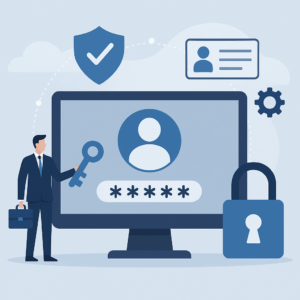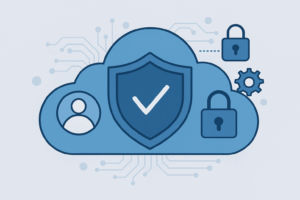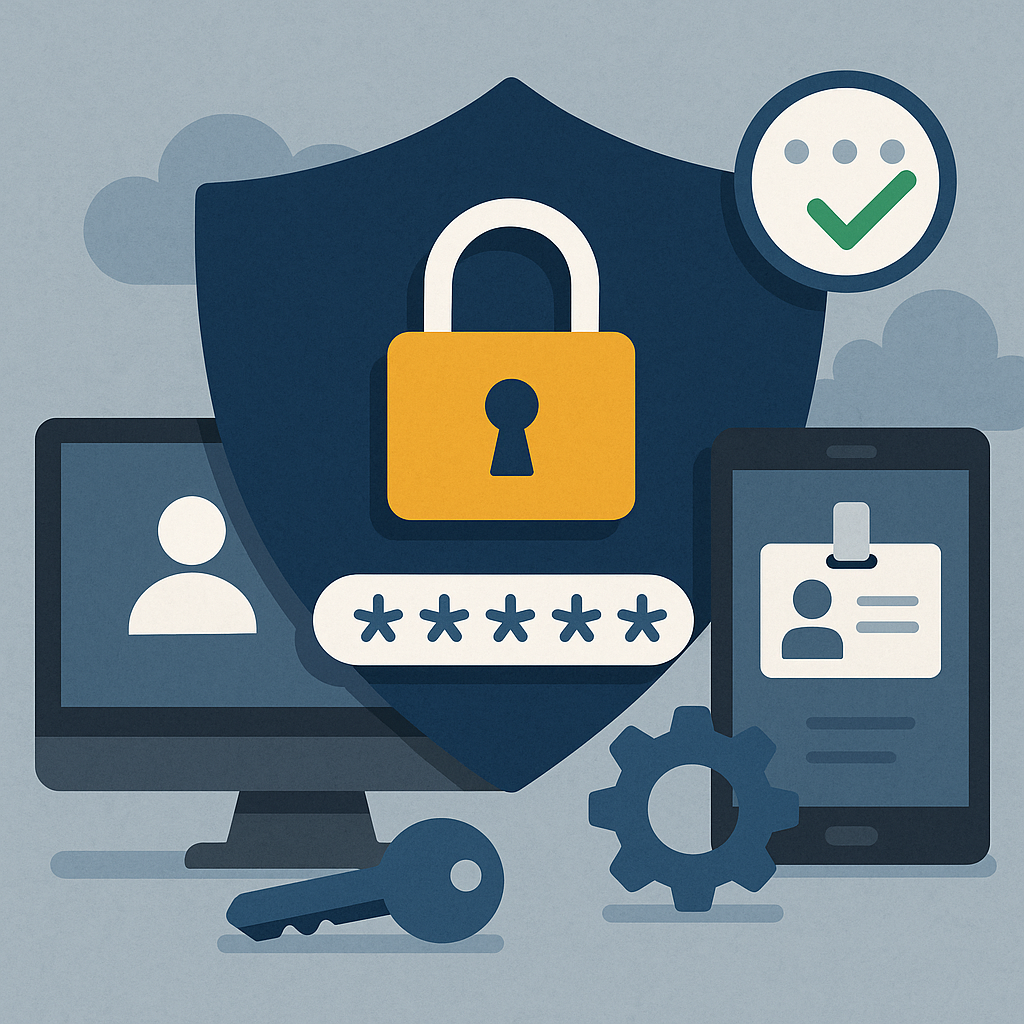In today’s complex digital landscape, effective Identity and Access Management (IAM) is crucial for maintaining security and enabling business agility. An IAM solution helps organizations manage identities and control user access to critical resources, ensuring that the right individuals have the appropriate level of access at the right time. This article explores the benefits of adopting a managed IAM service, highlighting how it can streamline operations, enhance security, and support compliance efforts.
Understanding IAM and Its Importance
What is Identity and Access Management?
Identity and Access Management (IAM) is the framework of policies and technologies that ensure the proper users in an enterprise have the appropriate access to technology resources. This access needs to be controlled to protect digital identities from unauthorized use, which is a key aspect of cybersecurity. The primary goal of IAM is to manage identities effectively, ensuring that users are authenticated and authorized before gaining access to sensitive data and systems, thereby improving overall identity security.
The Role of IAM in Digital Security
IAM plays a pivotal role in bolstering digital security by governing user access and minimizing the risk of unauthorized data breaches. A robust IAM program ensures that only verified digital identities can access sensitive resources, thus preventing potential internal and external threats. By implementing strong authentication measures and continually monitoring access, IAM effectively reduces the attack surface and enhances overall identity security, which is a cornerstone of comprehensive cybersecurity (NIST Digital Identity Guidelines).
Key Components of an IAM Program
A comprehensive IAM program is built upon several essential components:
-
Identity Governance (IGA): Managing user identities and entitlements.
-
Privileged Access Management (PAM): Securing privileged accounts with elevated access rights.
-
Authentication Mechanisms: Multi-factor authentication to verify user identities.
-
Automation Tools: Streamlining IAM processes and reducing manual errors.
Together, these elements create a robust IAM solution.

Managed IAM Services Overview
Defining IAM Managed Services
IAM managed services offer comprehensive identity and access management (IAM) solutions, provided by a managed services provider, enabling organizations to outsource their IAM needs. This involves delegating the management, monitoring, and maintenance of digital identities and access controls to experts. By utilizing IAM managed services, businesses can focus on their core competencies while ensuring robust identity security and compliance. These services often include professional services for implementation and ongoing support.
Benefits of Using a Managed Services Provider
Hiring a managed services provider for your IAM program offers several advantages, including:
-
Reduced operational costs
-
Enhanced security posture
-
Access to specialized IAM expertise
Beyond these gains, businesses also benefit from scalable solutions and proactive threat detection. Compliance is simplified, as the provider helps maintain adherence to industry regulations such as ISO/IEC 27001 Security Standards, further strengthening identity security.
Choosing the Right IAM Managed Service
Selecting the appropriate IAM managed service requires careful consideration. Evaluate the provider’s expertise, service offerings, and ability to align with your organization’s specific requirements and compliance obligations. Look for a provider that offers comprehensive identity governance, privileged access management, robust authentication, and automation capabilities. Ensure the IAM service seamlessly integrates with your existing infrastructure and provides scalable management solutions to support your growth and transform your IAM strategy.

Transforming Your IAM Strategy
Best Practices for IAM Implementation
Effective IAM implementation relies on best practices to improve identity security. Key elements include:
-
Defining granular access controls aligned with organizational needs.
-
Implementing multi-factor authentication.
-
Regularly reviewing user access rights.
-
Automating IAM processes to reduce manual errors.
Periodic security audits and ongoing employee training on identity management policies are also critical to transforming IAM successfully.
Automating IAM Processes
Automation is essential for streamlining IAM processes and improving efficiency. By automating tasks like user provisioning, de-provisioning, and access reviews, organizations can reduce manual effort and minimize risk. Automated workflows ensure access rights are granted and revoked promptly, enhancing both security and compliance.
How to Streamline Identity Services
Organizations can streamline identity services by consolidating identity repositories, centralizing access management, and implementing self-service capabilities. This empowers users to manage their own profiles and access requests, reducing IT workload. By optimizing workflows and leveraging automation, organizations can improve efficiency, strengthen identity security, and create scalable IAM programs.

Reducing Risk with Managed IAM
Building a Secure IAM Environment
In today’s evolving threat landscape, securing digital identities is critical. Organizations should implement robust measures such as multi-factor authentication, privileged access management, strong access controls, and regular access reviews to protect sensitive resources. These IAM practices ensure alignment with cybersecurity best practices.
Operational Efficiency in Identity Management
Operational efficiency can be significantly enhanced with automation. Automating provisioning, de-provisioning, and access reviews reduces errors and effort. Self-service features empower users while ensuring timely and accurate management of access rights. This strengthens both security and efficiency within IAM solutions.
Supporting Your IAM Needs with Professional Services
To maximize IAM program value, organizations should leverage professional services. These provide expert guidance in implementing best practices, configuring IAM solutions, and integrating them with existing infrastructure. Whether deploying identity governance (IGA) or enhancing authentication mechanisms, professional services ensure managed IAM aligns with compliance needs.
Future Trends in IAM Solutions
The Rise of Managed Digital Identity Services
Organizations are increasingly outsourcing IAM to managed services providers for expertise and scalability. This trend reflects the challenges of managing digital identities in cloud-centric environments where compliance and agility are critical.
Integrating IGA and PAM in IAM Programs
Integrating Identity Governance and Administration (IGA) with Privileged Access Management (PAM) is emerging as a best practice. This integration provides a complete view of user access rights, strengthens identity security, and reduces insider threats.
Leveraging Automation for Enhanced Security
Automation will play an increasingly crucial role in IAM solutions. Automating threat detection, incident response, and compliance reporting reduces manual effort while improving speed and accuracy. Research by Forrester highlights automation as a key driver of IAM maturity and digital security resilience.

Conclusion: Driving Security and Agility with Managed IAM
Managed IAM services empower organizations to strengthen security, reduce operational burden, and future-proof identity management strategies. By integrating automation, governance, and expert support, businesses can minimize risk, streamline operations, and ensure compliance in an increasingly complex digital environment.
👉 To see how UberEther’s Managed IAM solutions can transform your identity security and compliance strategy, explore our services today.




